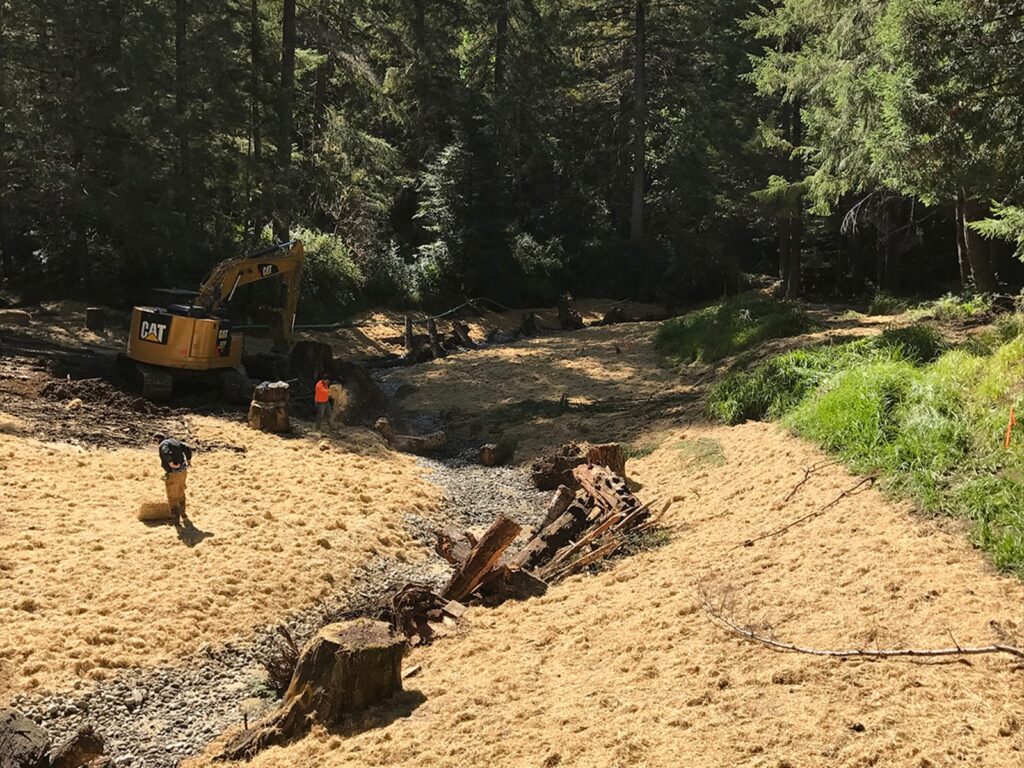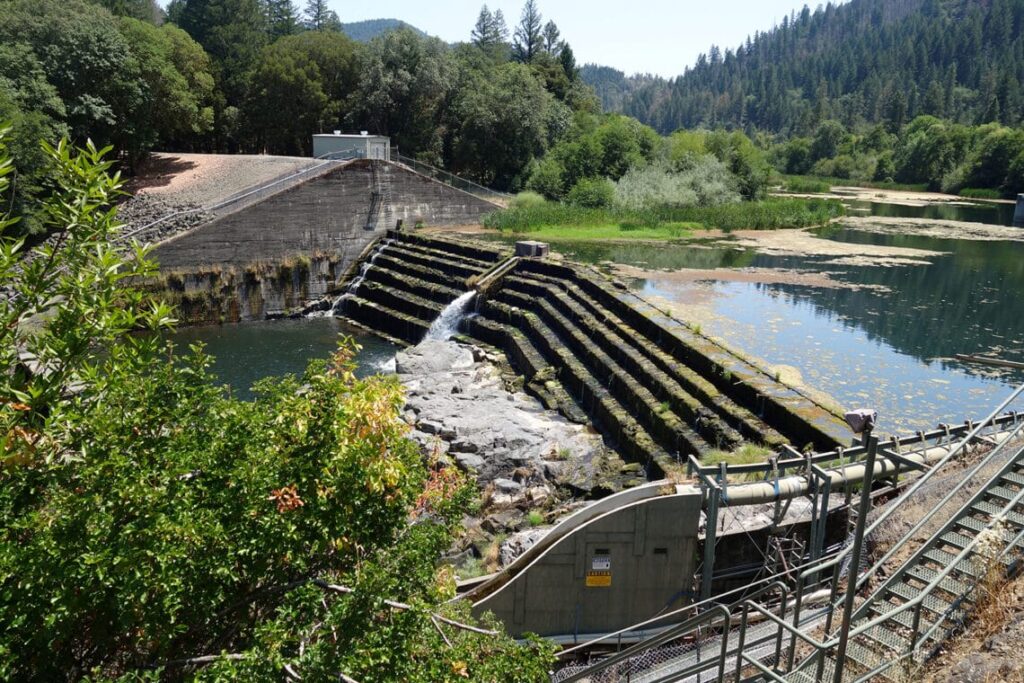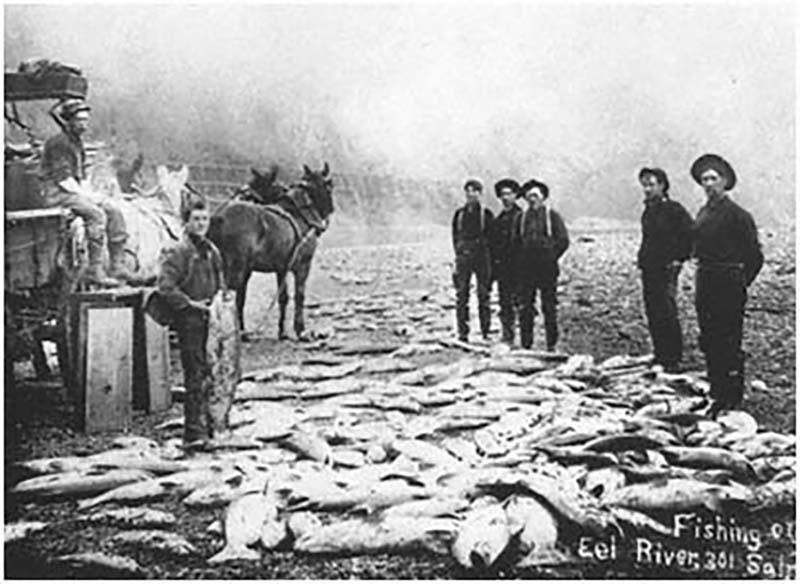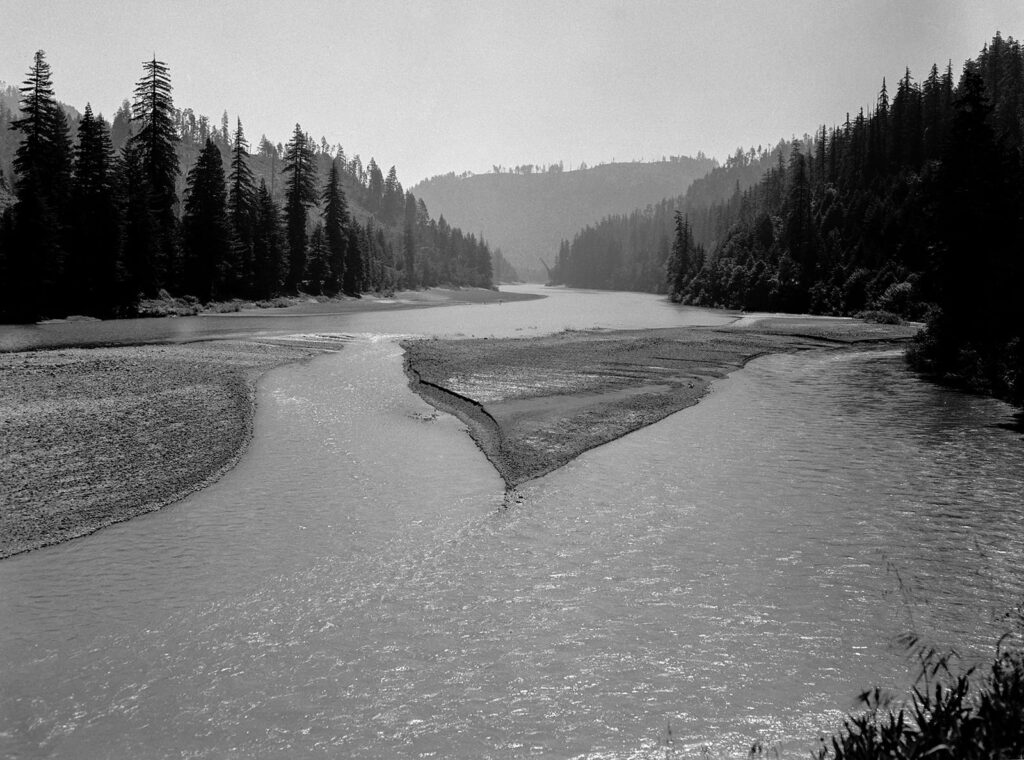
PG&E’s decommissioning plan for the Potter Valley Project on California’s Eel River would remove all in-river facilities and make it the longest free-flowing river in the state
On November 17, six weeks after the last remnants of the Copco II Dam on the Klamath River were removed, the Pacific Gas and Electric company (PG&E) announced its plan for decommissioning the Potter Valley Project on the Eel River, whose two dams completely block fish passage to more than 300 miles of headwater habitat for salmon and steelhead.
Both alternatives of PG&E’s plan call for completely removing the two Potter Valley dams, Scott and Cape Horn, starting in 2028.
Brian Johnson, California director for TU, said, “Taking out these two dams is the most important thing we can do for salmon and steelhead on the Eel, which are hanging on by a thread. Dam removal will make the Eel the longest free-flowing river in California and will open hundreds of stream miles of prime habitat that has been unavailable to anadromous fish for over 100 years.”

Above: TU-led restoration project, SF Eel tributary
The Eel River represents California’s best hope for recovering wild runs of native salmon and steelhead. For more than two decades, TU has worked to reconnect and restore habitat in Eel River tributaries, while fighting to improve fish passage through the Potter Valley Project.
Matt Clifford, director of law and policy for TU in California, said, “We salute PG&E for doing the right thing here, for the fish and peoples of the Eel River watershed, by committing to taking out the dams as soon as possible. And we pledge to help deliver on the potential for a ‘two-basin’ solution that will also support water needs in the upper Russian River.”
The Potter Valley Project is more than a century old. It includes the Scott and Cape Horn dams and a diversion tunnel that moves water out of the Eel into the East Branch of the Russian River, and a powerhouse. PG&E owns the Project but allowed its operating license to expire and is required to develop a license surrender and decommissioning plan for the facilities. PG&E must submit a final draft License Surrender Application (LSA) and Decommissioning Plan to federal regulators in May 2024 and a Final LSA in January 2025.

Image: Matt Clifford.
For years, Scott and Cape Horn dams have not generated enough hydropower to be profitable. Relicensing would have required massive investments to meet federal fish passage requirements. Equipment failures in 2021 caused PG&E to permanently suspend hydropower operations. Water storage in Lake Pillsbury, the reservoir created by Scott Dam, has now been reduced by more than 25% due to seismic safety concerns.
Scott Dam completely blocks fish passage to high-quality habitat in the Eel River headwaters. The smaller Cape Horn diversion dam has a defective fish ladder that has never worked properly.
A million salmon and steelhead once returned to the Eel each year, but their runs have plummeted to a fraction of historical numbers. In 2023, American Rivers named the Eel one of America’s Most Endangered Rivers, citing the Potter Valley Project dams as a major factor driving Chinook salmon, steelhead and Pacific lamprey toward extinction.

PG&E’s new plan includes an alternative that reflects a revised proposal from a regional group to negotiate terms for a new diversion facility that could support ongoing, limited water diversions into the Russian River watershed after removing the dams, provided such diversions allow full recovery of the Eel River fisheries to self-sustaining, harvestable populations.
Proponents of this comprehensive proposal include the California Department of Fish and Wildlife, Humboldt County, Mendocino County Inland Water and Power Commission, Round Valley Indian Tribes, Sonoma County Water Agency, Trout Unlimited and California Trout.
This proposal includes a commitment from all proponents that funding, permitting and construction of a new water diversion will not delay PG&E’s decommissioning and removal of the two dams.

Image: California Department of Water Resources.
“The Round Valley Indian Tribes have relied on the Eel River and its fishery since time immemorial,” said Lewis “Bill” Whipple, president of the Round Valley Indian Tribes Tribal Council. “The Tribes are pleased to join with their partners in creating a path to a solution that ensures the survival and recovery of our most precious resource.”
Trout Unlimited is honored to work closely with the Round Valley Indian Tribes and California Trout on recovering the Eel River and its legendary fisheries.
TAKE ACTION: Submit comments on PG&E’s draft decommissioning plan.
Read our press release on PG&E’s filing of its decommissioning plan here.


